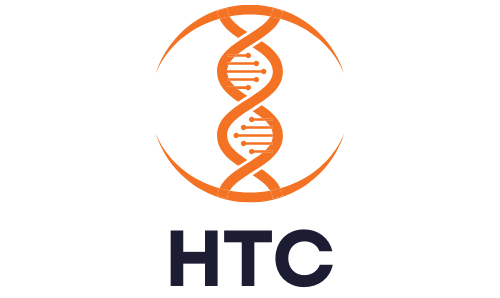HealthTech in Emerging Markets: Opportunities and Challenges
The global HealthTech landscape is experiencing rapid growth, driven by technological advancements and an increasing emphasis on improving healthcare delivery and outcomes. HealthTech encompasses a wide range of technologies, including telemedicine, mobile health apps, wearable devices, AI-driven diagnostics, and more. These innovations have the potential to revolutionize healthcare by making it more accessible, efficient, and personalized. While HealthTech is gaining traction globally, its impact in emerging markets is particularly noteworthy. Emerging markets, with their unique challenges and opportunities, present a fertile ground for HealthTech innovation. This blog aims to explore the opportunities and challenges of HealthTech in emerging markets, shedding light on the factors driving growth, the innovative solutions tailored for these regions, and the obstacles that need to be overcome to realize the full potential of HealthTech.
Understanding Emerging Markets
Emerging markets are defined by their rapid economic growth, increasing industrialization, and improving standards of living. These markets often exhibit high rates of urbanization and a growing middle class, leading to greater demand for quality healthcare services. Key characteristics of emerging markets include a youthful population, a rising number of internet and mobile phone users, and a burgeoning entrepreneurial ecosystem. Countries like India, China, Brazil, and South Africa are prime examples of emerging markets with significant HealthTech potential. These regions are witnessing substantial investments in healthcare infrastructure and technology, driven by both the public and private sectors. The growing prevalence of chronic diseases, coupled with the need to improve healthcare accessibility and affordability, is fueling the demand for innovative HealthTech solutions.
The healthcare landscape in emerging markets is characterized by a mix of public and private healthcare systems, with varying degrees of quality and accessibility. Public healthcare systems often struggle with underfunding, limited resources, and a shortage of healthcare professionals. Private healthcare providers, while offering higher quality care, are often unaffordable for the majority of the population. This duality presents a unique challenge and an opportunity for HealthTech to bridge the gap by providing cost-effective, scalable, and accessible healthcare solutions.
Opportunities in HealthTech for Emerging Markets
Emerging markets present a myriad of opportunities for HealthTech. One of the most significant opportunities lies in leveraging mobile technology to deliver healthcare services. With high mobile phone penetration rates, mobile health (mHealth) apps can provide essential health services, such as teleconsultations, remote monitoring, and health education, to underserved populations. For instance, mHealth solutions like mPedigree in Africa use SMS-based systems to combat counterfeit drugs, ensuring the authenticity of medications.
Telemedicine is another promising area, enabling healthcare providers to offer remote consultations, diagnostics, and treatment plans. This is particularly valuable in regions with limited access to healthcare facilities. For example, the Indian company Practo connects patients with doctors through a telemedicine platform, expanding healthcare access to remote and rural areas. This platform not only improves accessibility but also reduces the burden on healthcare facilities by handling non-critical consultations remotely.
Innovative diagnostic tools tailored for low-resource settings also hold great potential. Portable diagnostic devices, such as the GeneXpert for tuberculosis testing, offer quick and accurate results without the need for sophisticated laboratory infrastructure. Additionally, AI-driven solutions like Ada Health’s symptom checker app provide users with preliminary diagnoses and advice, helping to bridge the gap in healthcare expertise. These tools empower patients to take charge of their health and seek timely medical intervention.
Several successful case studies highlight the impact of HealthTech in emerging markets. For example, Zipline, a drone delivery service, transports medical supplies, including blood and vaccines, to remote areas in Rwanda and Ghana, dramatically reducing delivery times and improving healthcare outcomes. Similarly, India's Aravind Eye Care System uses teleophthalmology to screen and treat patients in rural areas, significantly increasing access to eye care services. These initiatives demonstrate how HealthTech can overcome geographical barriers and deliver critical healthcare services to underserved populations.
In addition to mobile health and telemedicine, wearable devices offer another avenue for innovation. Wearables can monitor vital signs, track fitness levels, and manage chronic conditions, providing continuous health data to patients and healthcare providers. In emerging markets, where access to healthcare can be sporadic, wearable technology ensures that health data is continuously monitored and analyzed, enabling timely interventions and personalized care.
Another opportunity lies in the use of blockchain technology for health records management. Blockchain can provide a secure, decentralized system for storing and sharing patient health records, ensuring data integrity and privacy. This is particularly valuable in emerging markets, where health records are often fragmented and poorly managed. Blockchain can facilitate the seamless transfer of health data between different healthcare providers, improving continuity of care and patient outcomes.
Market Trends and Innovations
Regional trends in HealthTech innovation vary across emerging markets, influenced by local needs, infrastructure, and regulatory environments. In Asia, there is a strong focus on leveraging AI and big data to improve healthcare delivery. For instance, China's Ping An Good Doctor combines AI with telemedicine to offer comprehensive health services, including online consultations, diagnosis, and drug delivery. This platform uses AI algorithms to provide preliminary diagnoses, which are then reviewed by human doctors, ensuring accuracy and efficiency.
In Latin America, digital health platforms are gaining traction, with startups like Brazil’s Dr. Consulta providing affordable primary care services through a network of clinics supported by telemedicine. These clinics offer a range of services, including consultations, diagnostics, and minor procedures, at a fraction of the cost of traditional private healthcare providers. The integration of telemedicine allows for remote consultations, reducing the need for patients to travel long distances for medical care.
In Africa, mobile health solutions are predominant, addressing challenges such as limited healthcare infrastructure and workforce shortages. Companies like Hello Doctor in South Africa offer mobile-based health advice and consultations, making healthcare accessible to a broader population. These platforms use SMS and mobile apps to connect patients with healthcare professionals, providing timely medical advice and reducing the burden on overworked healthcare facilities.
Innovative HealthTech startups are making significant contributions to the market. For instance, India's 1mg provides an online pharmacy service, offering discounted medicines and health products while also providing diagnostic services and doctor consultations. This platform leverages the high mobile phone penetration in India to deliver healthcare services to a wide audience, particularly in rural areas where access to healthcare is limited. Similarly, Babylon Health, operating in Rwanda under the name Babyl, uses AI to provide digital health consultations, improving access to healthcare services. Babyl’s platform allows patients to book appointments, receive prescriptions, and access medical records through their mobile phones, making healthcare more accessible and convenient.
Case studies of innovative solutions further illustrate their impact. For example, Kenya’s M-TIBA, a mobile health wallet, allows users to save, send, and spend funds specifically for healthcare services, increasing financial access to healthcare. M-TIBA partners with healthcare providers to offer discounted services to users, making healthcare more affordable. In another example, Indonesia’s Halodoc connects patients with healthcare providers through an app, offering teleconsultations, medication delivery, and lab services, thus improving healthcare access and convenience. Halodoc’s platform also integrates with health insurance providers, streamlining the claims process and reducing out-of-pocket expenses for patients.
Challenges in HealthTech Adoption
Despite the promising opportunities, HealthTech adoption in emerging markets faces several challenges. Regulatory and infrastructure barriers are among the most significant obstacles. HealthTech solutions must navigate complex regulatory environments, which can vary widely across regions. Ensuring compliance with local healthcare regulations and standards is critical for the successful implementation of HealthTech solutions. In many emerging markets, regulatory frameworks are still evolving, and HealthTech companies must work closely with regulators to ensure their solutions meet the necessary requirements.
Infrastructure limitations, such as unreliable internet connectivity and electricity supply, can hinder the deployment of digital health solutions. In many rural areas, the lack of healthcare facilities and trained personnel further exacerbates these challenges. Additionally, data privacy and security concerns are paramount, as HealthTech solutions often involve the collection and storage of sensitive patient information. Ensuring that patient data is protected from breaches and unauthorized access is crucial for maintaining trust and compliance with regulations.
To overcome these challenges, strategic approaches are needed. Strengthening public-private partnerships can facilitate the development of robust healthcare infrastructure and regulatory frameworks. Governments and private sector entities can collaborate to invest in the necessary infrastructure, such as reliable internet connectivity and electricity supply, to support HealthTech deployment. Engaging with local communities to understand their needs and build trust is crucial for successful HealthTech adoption. Community engagement can also help identify potential barriers and tailor solutions to meet local needs.
Investing in education and training programs for healthcare professionals can enhance the effective use of HealthTech solutions. Training healthcare workers to use digital health tools and integrating HealthTech into medical education can improve the adoption and effectiveness of these solutions. Additionally, creating awareness among patients about the benefits of HealthTech can drive acceptance and utilization.
Investment Strategies
Investing in HealthTech in emerging markets requires a thorough understanding of the unique dynamics of these regions. Identifying promising investment opportunities involves assessing the local healthcare landscape, regulatory environment, and market demand. Investors should look for startups with innovative solutions that address pressing healthcare challenges and have a scalable business model. Companies that demonstrate a strong understanding of local needs and have established partnerships with local healthcare providers are particularly attractive.
Factors to consider when investing include the startup's technological capabilities, regulatory compliance, and potential for market penetration. Conducting due diligence to evaluate the startup's team, partnerships, and track record is essential. Investors should also consider the company's financial health and funding history to assess its sustainability and growth potential.
Diversification is a key strategy to mitigate risks, as emerging markets can be volatile and unpredictable. Investing across different regions and sectors within HealthTech can help balance potential risks and rewards. For example, diversifying investments across telemedicine, mHealth, diagnostics, and wearable technology can reduce exposure to market-specific risks and increase the potential for returns.
Risk management strategies are also crucial. This includes understanding the political and economic stability of the target market, staying informed about regulatory changes, and having contingency plans for potential disruptions. Collaborating with local partners who have in-depth market knowledge can also enhance investment success. Local partners can provide valuable insights into the regulatory environment, market dynamics, and cultural nuances, helping investors navigate potential challenges and capitalize on opportunities.
The Role of Policy and Regulation
Policy and regulation play a critical role in shaping the HealthTech landscape in emerging markets. Governments can support HealthTech innovation through initiatives that provide funding, incentives, and a favorable regulatory environment. For example, India’s National Digital Health Mission aims to create a digital health ecosystem that enhances healthcare delivery through the integration of HealthTech solutions. This initiative includes the development of a unified health interface, digital health IDs for citizens, and the establishment of health data standards.
Regulatory frameworks must be adaptable to accommodate rapidly evolving technologies while ensuring patient safety and data privacy. Clear guidelines on data protection, interoperability, and compliance can foster innovation and build trust among stakeholders. Policymakers should engage with HealthTech companies, healthcare providers, and patients to develop regulations that balance innovation with safety. Collaborative efforts can ensure that regulations are practical, enforceable, and supportive of HealthTech growth.
Government initiatives can also drive HealthTech adoption. For instance, Rwanda's use of drones for medical supply delivery, supported by government partnerships, showcases how policy can facilitate innovative solutions. Similarly, Brazil’s government has launched several initiatives to promote digital health, including telemedicine regulations and incentives for HealthTech startups. Public awareness campaigns and education programs can encourage the acceptance and use of HealthTech solutions. Governments can also provide funding and grants to support HealthTech research and development, fostering a culture of innovation.
Conclusion
HealthTech presents immense opportunities to improve healthcare delivery and outcomes in emerging markets. From mobile health apps and telemedicine to AI-driven diagnostics and innovative delivery systems, HealthTech solutions are transforming healthcare access and quality. However, realizing the full potential of HealthTech in these regions requires addressing challenges related to regulation, infrastructure, and market dynamics.
Investors, policymakers, and healthcare providers must collaborate to create an enabling environment for HealthTech innovation. By understanding the unique characteristics of emerging markets, supporting innovative solutions, and implementing strategic investment and regulatory frameworks, stakeholders can unlock the transformative potential of HealthTech. As we look to the future, continued efforts to promote HealthTech in emerging markets will be crucial for achieving global health equity and improving healthcare outcomes for millions of people.
Exploring investment opportunities and supporting HealthTech innovation in emerging markets is not just a financial imperative but also a moral one. By leveraging technology to address healthcare challenges, we can create a more equitable and healthier world for all.










